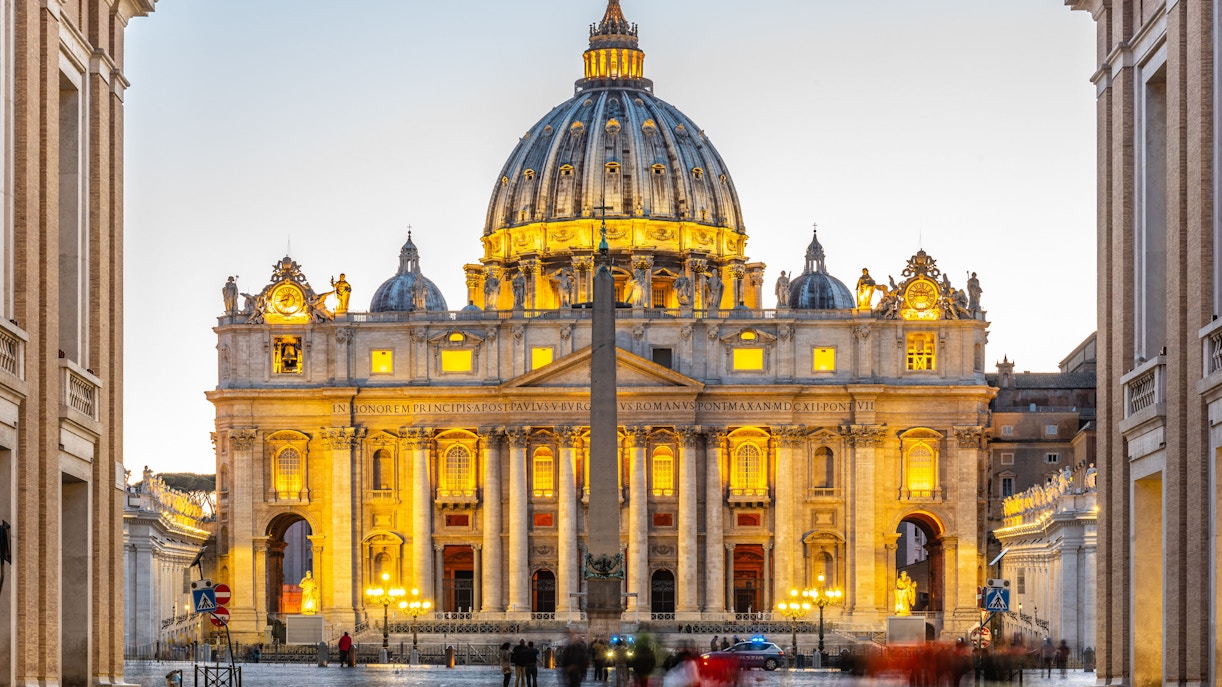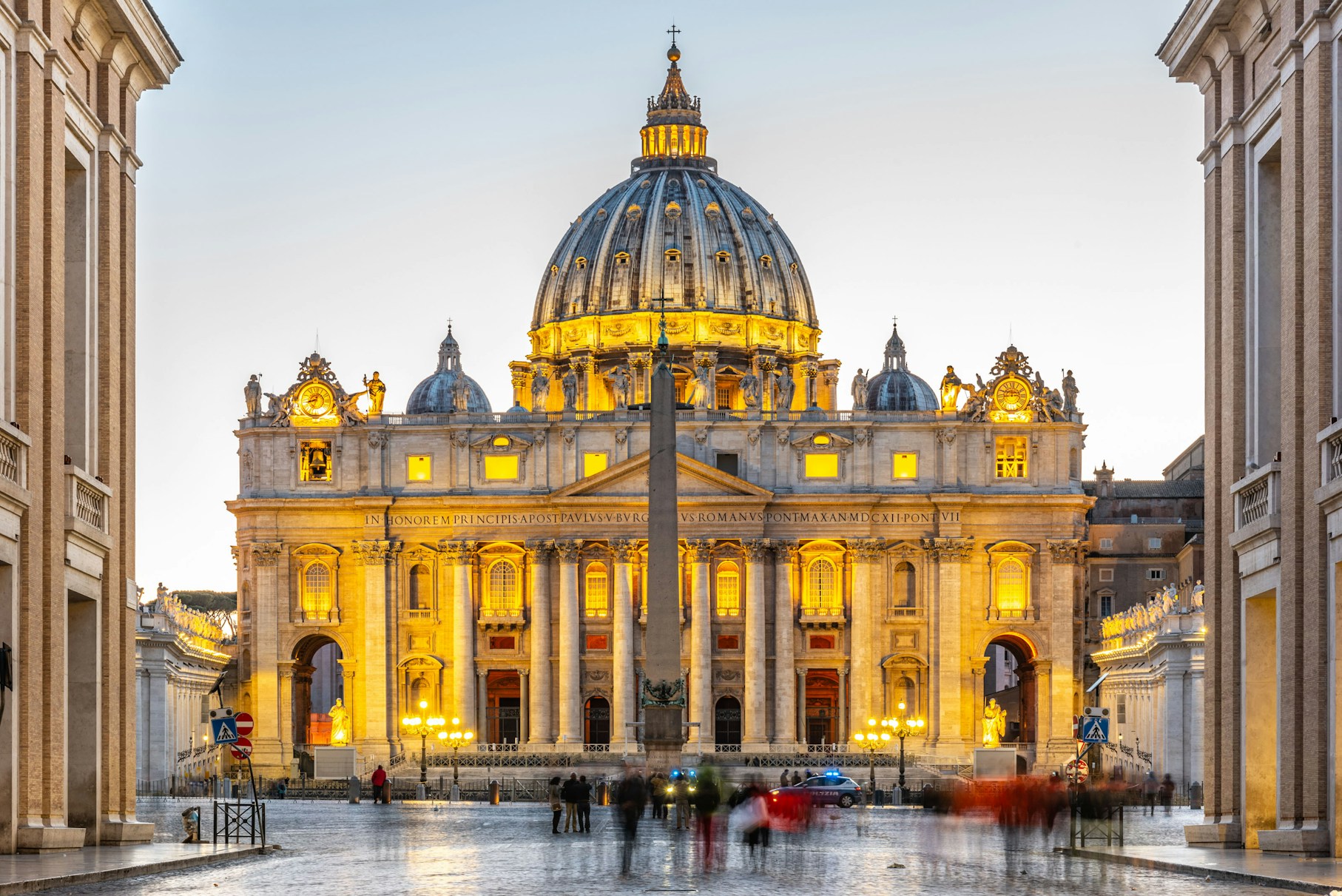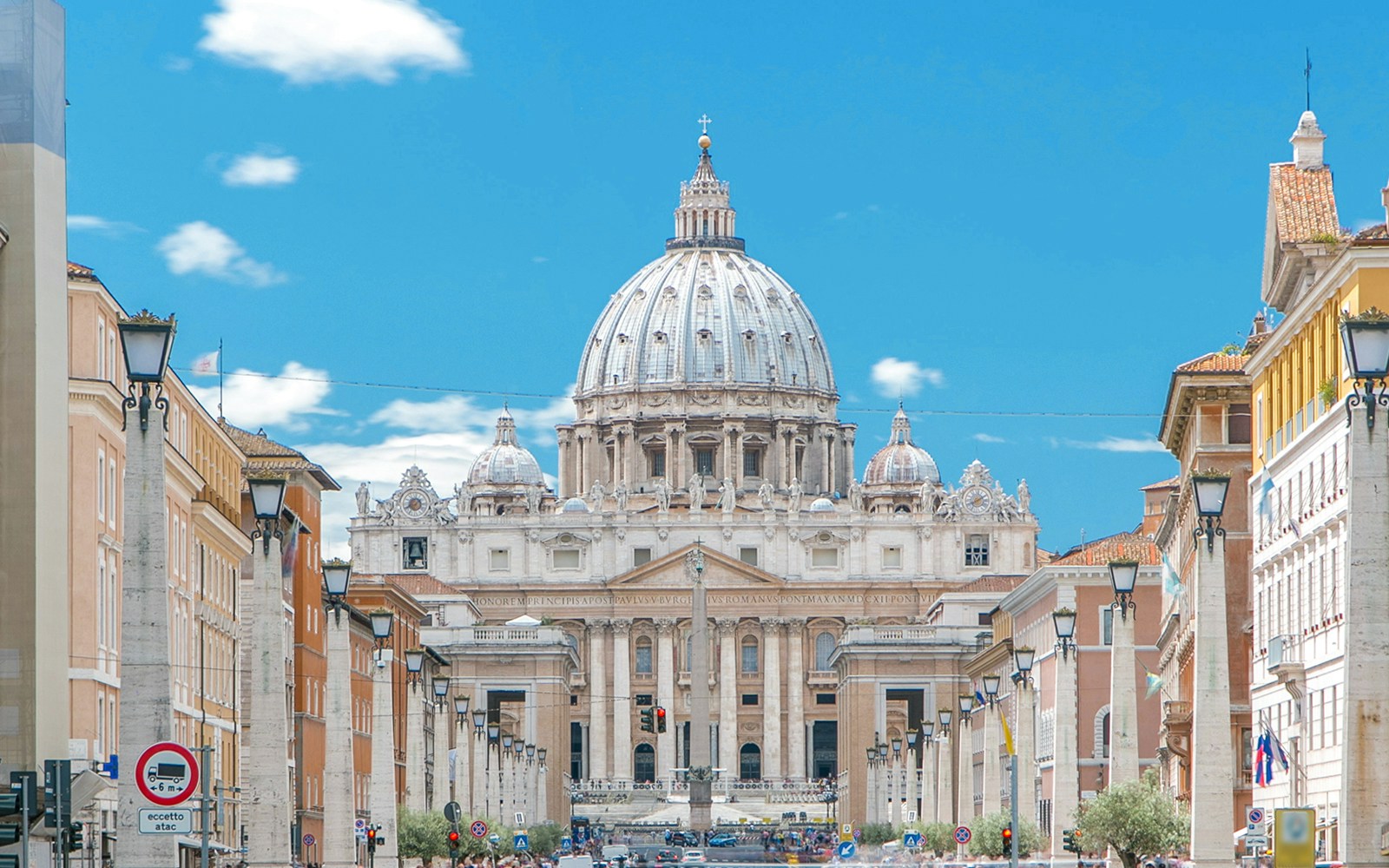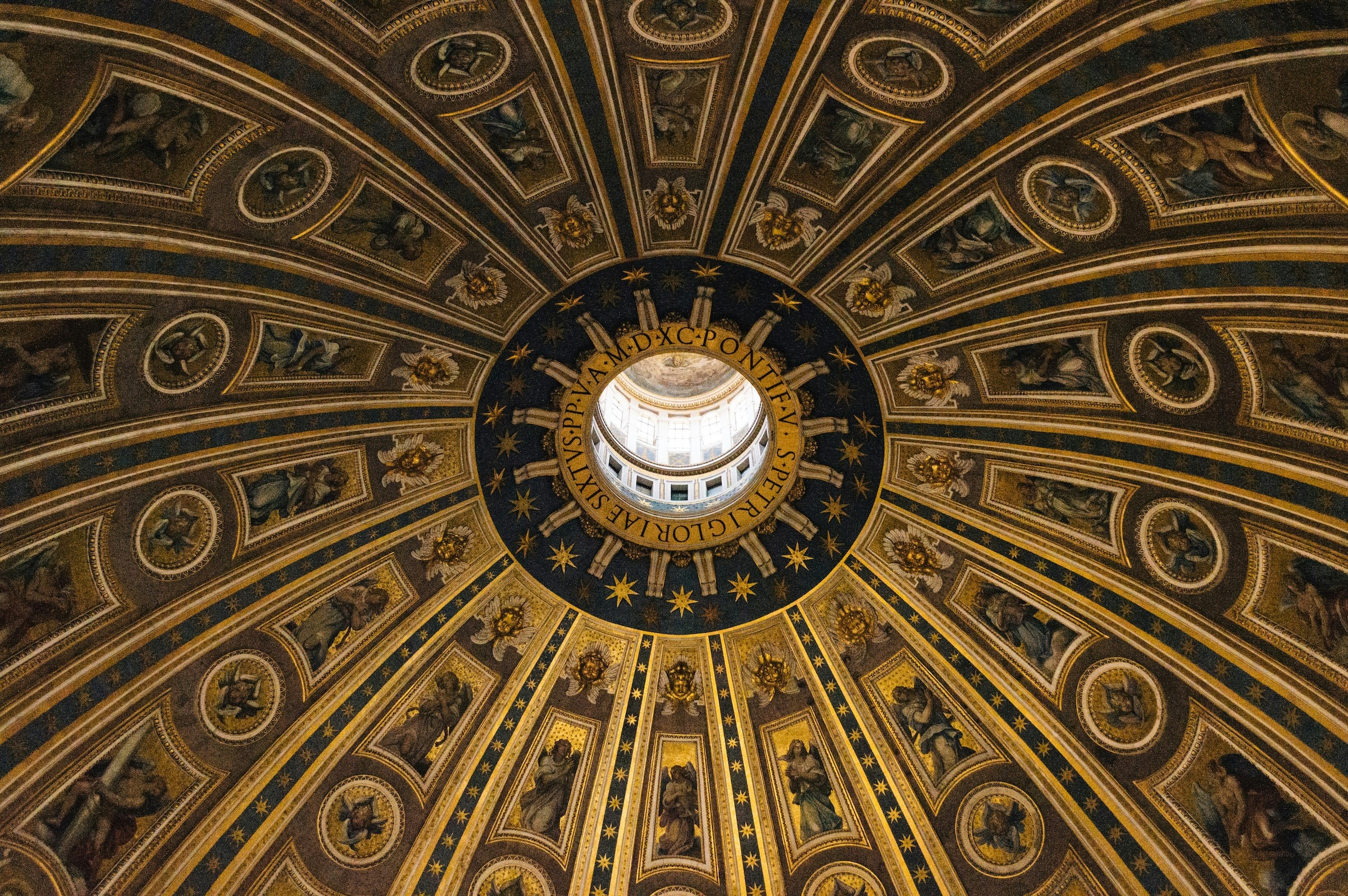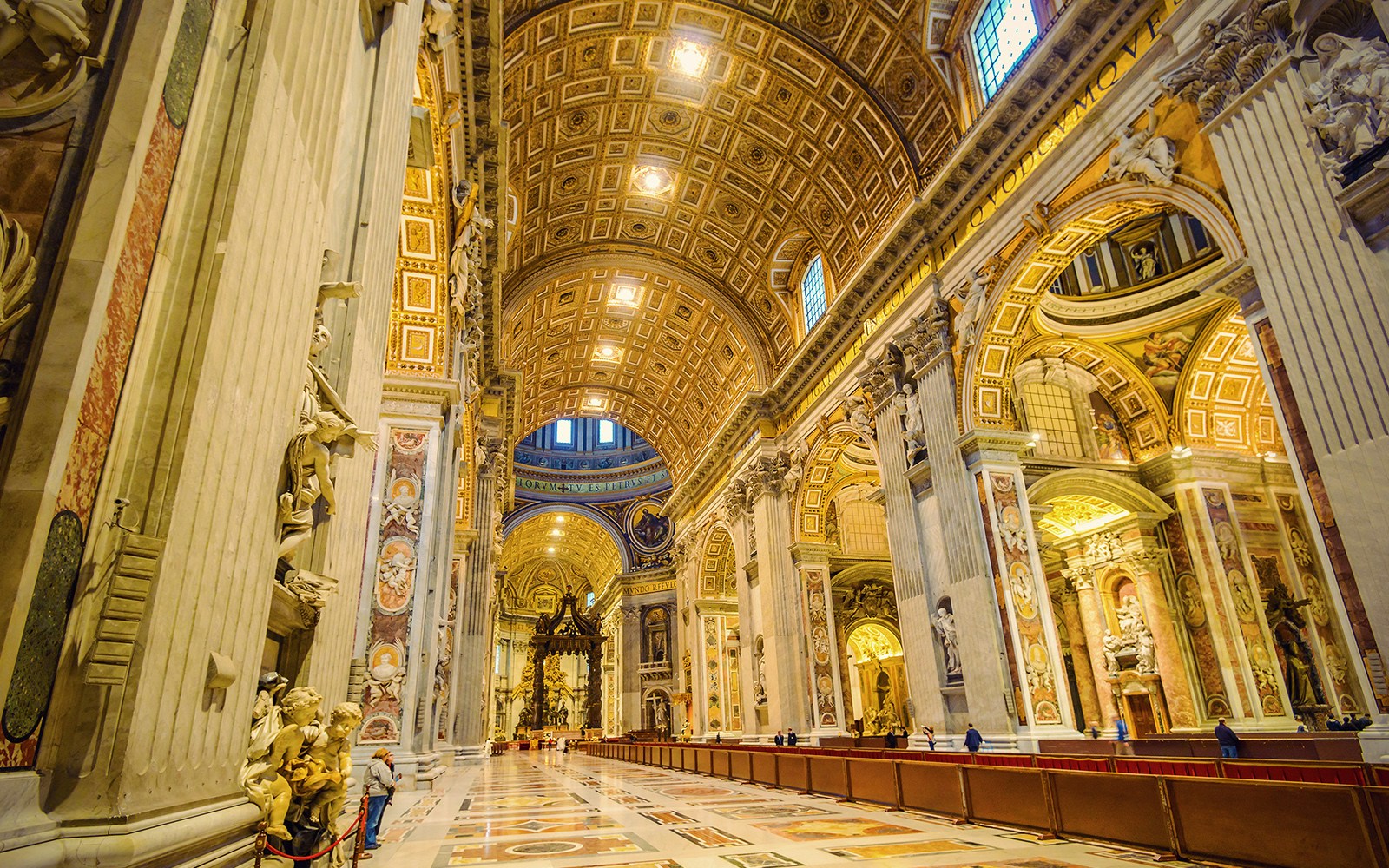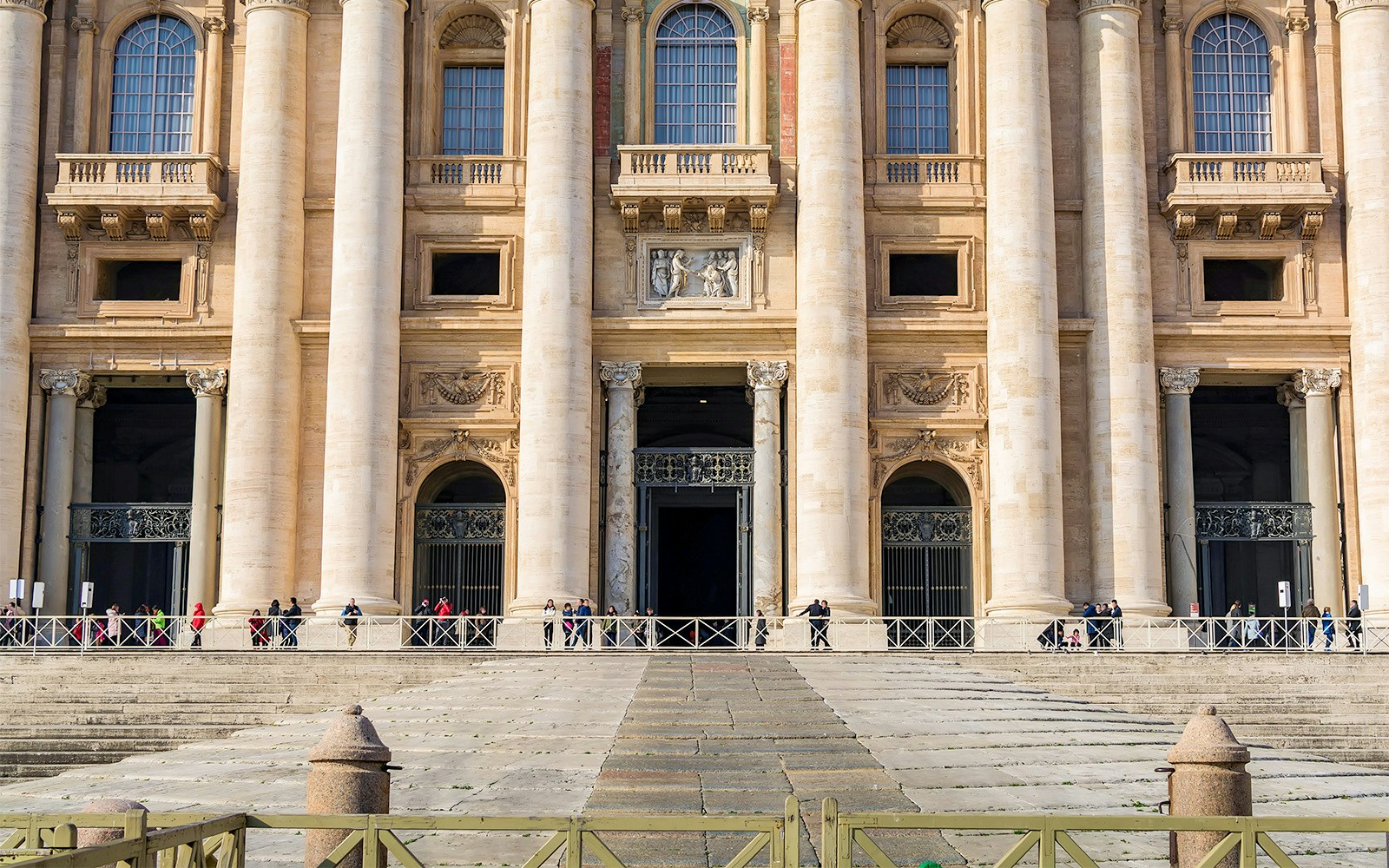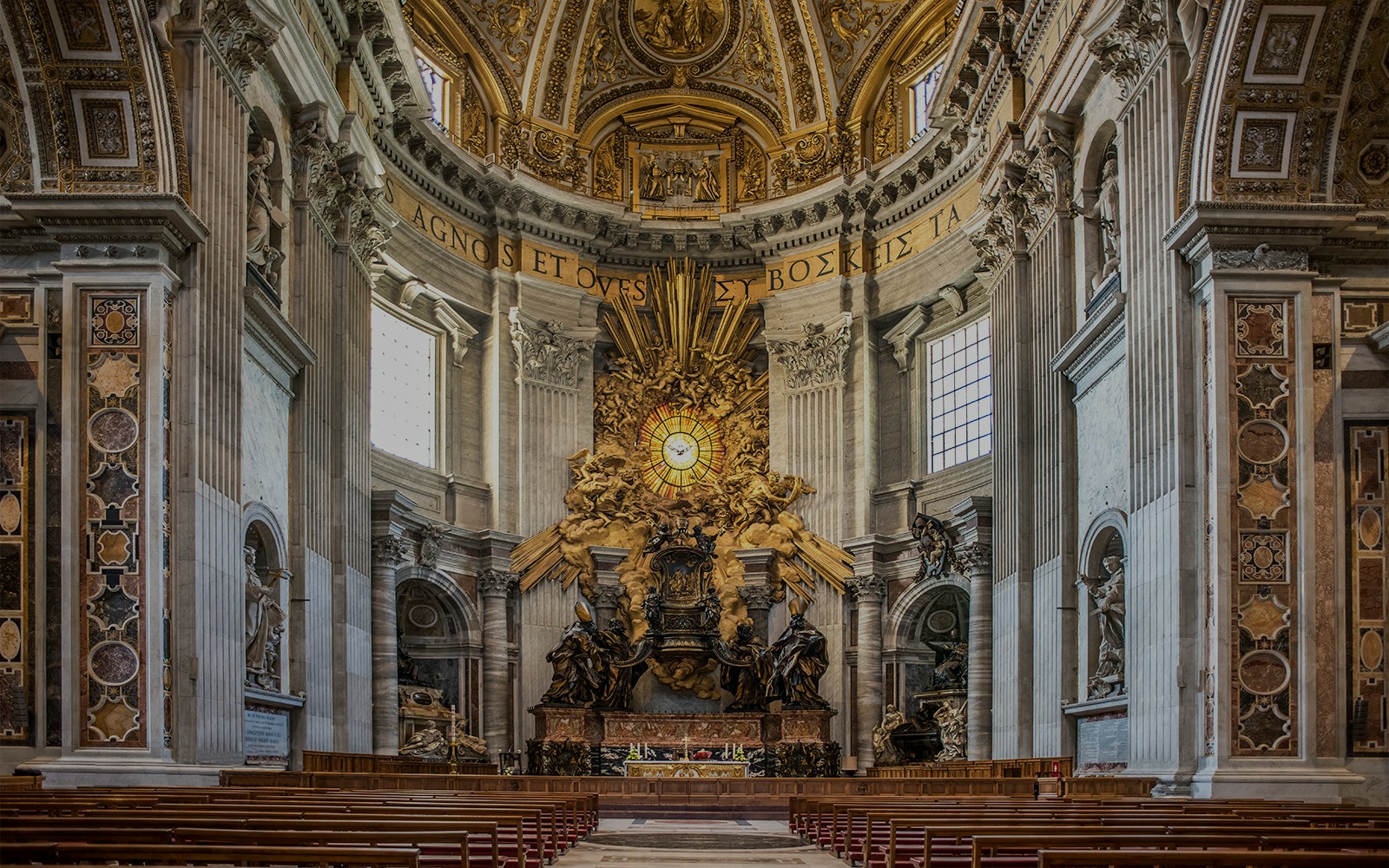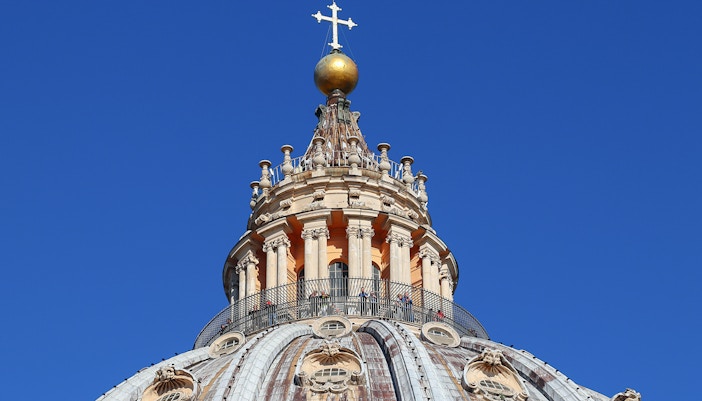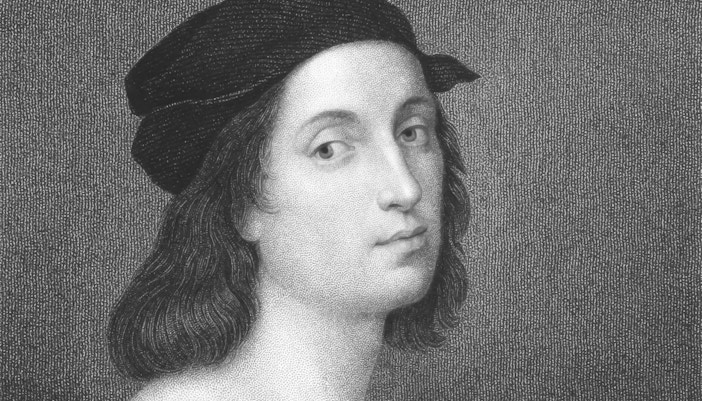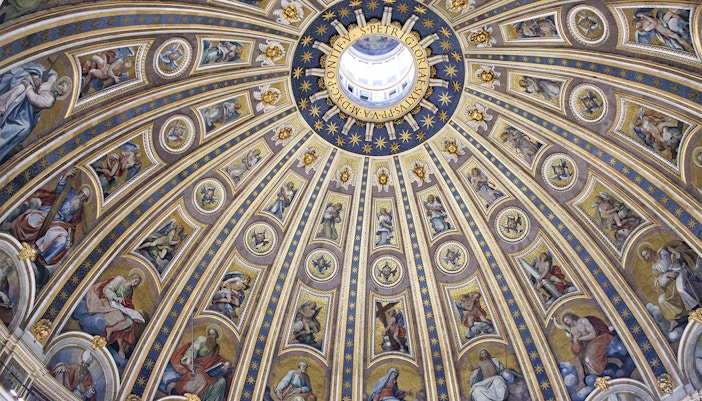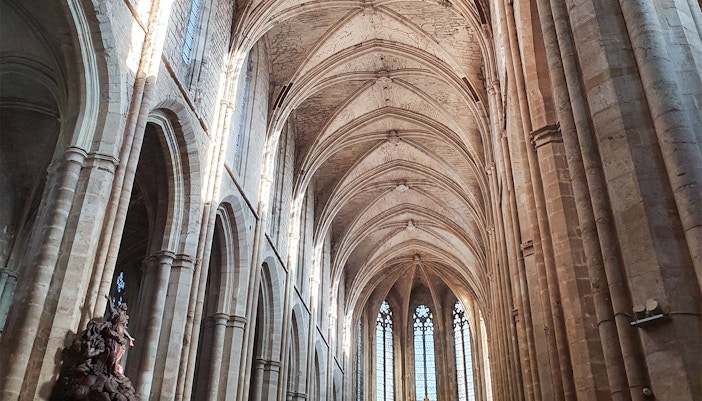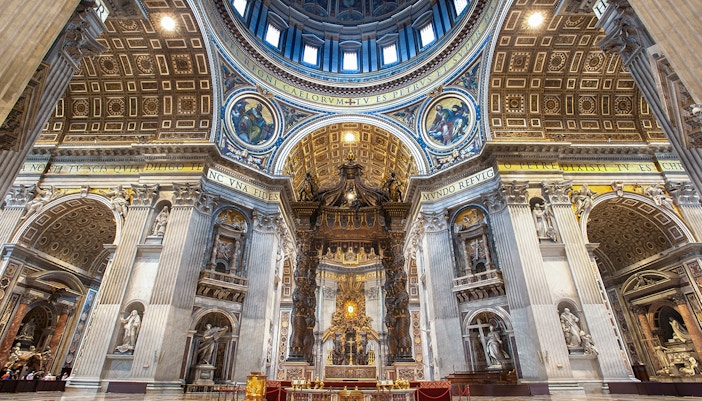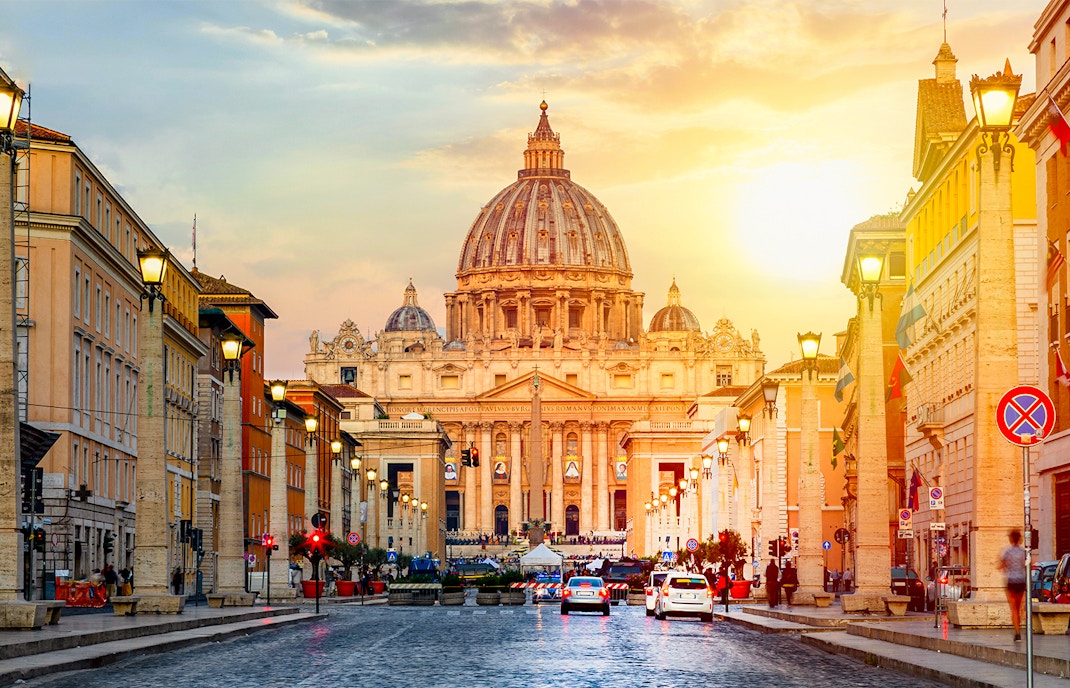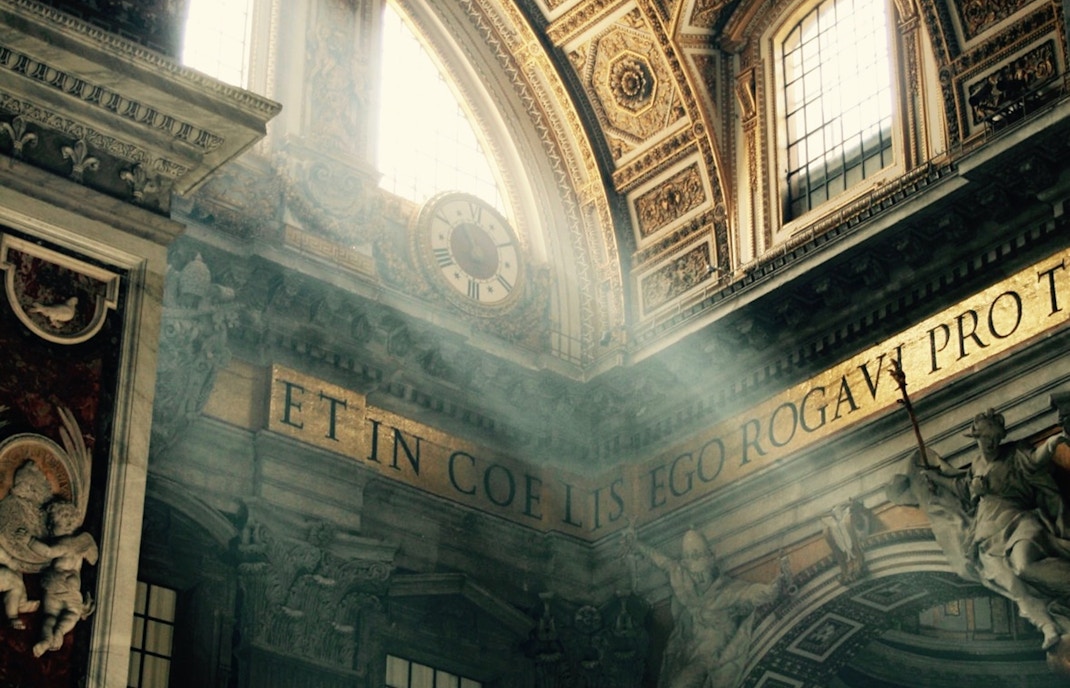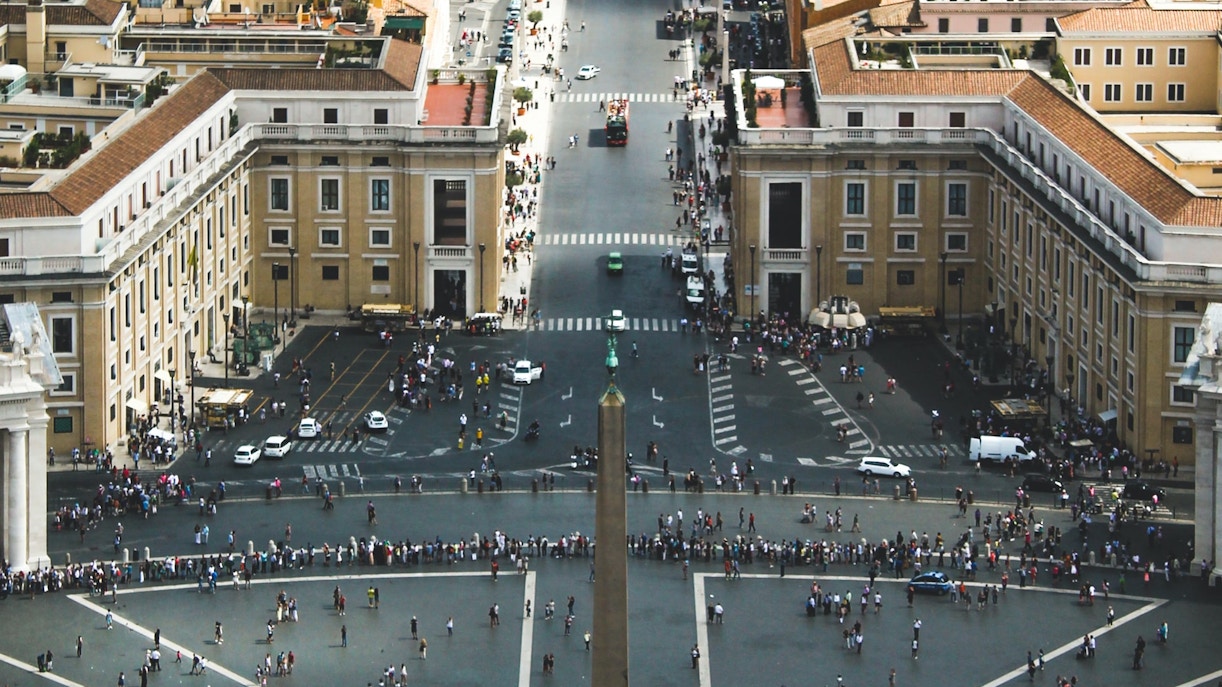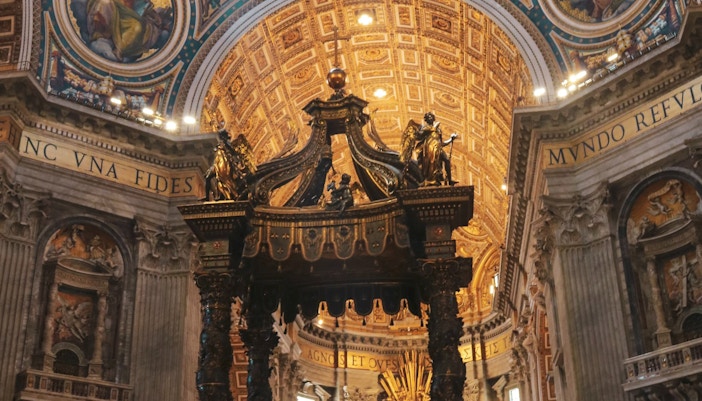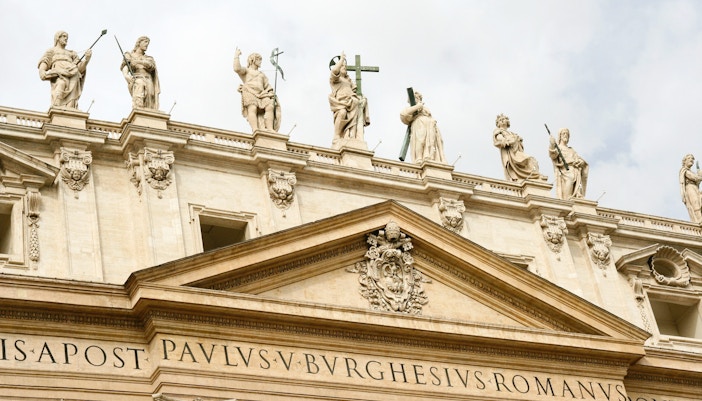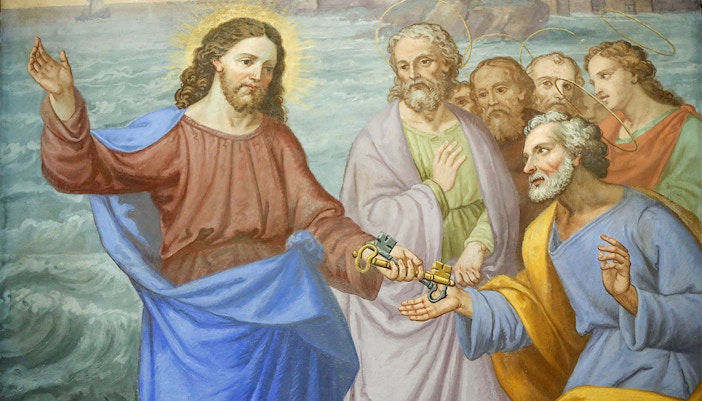Experiencing the architecture in person
As you step into St. Peter’s Basilica, the sheer scale takes your breath away. The marble floor seems to stretch endlessly beneath your feet, drawing your eye toward the shimmering bronze Baldachin by Bernini, standing beneath Michelangelo’s awe-inspiring dome. Light pours through the oculus high above, illuminating the intricate mosaics and colossal statues that line the nave. It’s a space that humbles and uplifts in equal measure.
Look up and you’ll see Latin inscriptions encircling the dome, declaring the Basilica’s spiritual significance. Every detail—from the symmetry of the nave to the ornate chapels—feels like a conversation between divine inspiration and architectural mastery. If you’ve marveled at the grandeur of the Duomo in Florence, you’ll find St. Peter’s on an even more monumental scale.
See it up close with a skip-the-line tour, or explore further and learn more about what’s inside.
